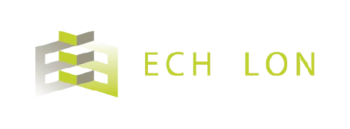Donor Advised Funds: The Smart Tax Move for High-Income Investors
If you’re a high-income investor looking to save on taxes while supporting causes you care about, I have good news.
You don’t need to choose between these two goals. In fact, with the right strategy, you can dramatically reduce your tax bill AND increase your charitable impact at the same time.
That’s where donor-advised funds come in.
I’ve helped dozens of clients across the country use DAFs to save hundreds of thousands in taxes during high-income years. In this article, I’ll show you exactly how to do the same.
What Is a Donor-Advised Fund?
A donor-advised fund is like a charitable investment account that gives you three powerful benefits:
- You get an immediate tax deduction when you contribute
- Your money grows tax-free inside the account
- You recommend grants to your favorite charities whenever you want
Think of it as your own charitable checking account without the administrative headaches of a private foundation.
When you contribute to your DAF, you’re making an irrevocable gift to the sponsoring organization (like Fidelity Charitable, Schwab Charitable, or your local community foundation). While you can’t take the money back, you maintain “advisory privileges” about where grants go.
When Does a DAF Make the Most Sense?
DAFs shine brightest during high-income years.
Recently, one of my clients in Austin sold her technology business for $3.2 million. The capital gains tax bill was going to be enormous.
We moved $800,000 of her company stock into a DAF before the sale closed. This one move:
- Eliminated over $190,000 in capital gains tax
- Created an immediate $800,000 tax deduction in her highest-earning year
- Established a giving fund she now uses to support educational causes she’s passionate about
She saved nearly $296,000 in taxes in that single transaction.
High-income scenarios perfect for DAF funding include:
When you sell a business When your stock options or RSUs vest During a big bonus year After receiving a large inheritance When selling highly appreciated property or investments
Let me be clear: the timing of your DAF contribution matters tremendously. You must make the donation before the sale is legally binding. If you wait until after you’ve signed a purchase agreement, you’ve missed the opportunity.
DAFs vs. Checkbook Giving: What’s the Difference?
Why not just write checks to charity when you want to give? The difference comes down to timing and tax efficiency.
The Right Assets to Give: Why Cash Is Your Last Choice
The magic of DAFs happens when you donate the right assets.
Best assets to donate:
- Stocks you’ve held over one year that have gone up in value
- Real estate that has grown in value
- Business interests before a sale
- Cryptocurrency with big gains
Example: You bought stock for $10,000 that’s now worth $50,000.
Option A: Sell and donate cash
- Pay $9,600 in capital gains tax (assuming 24% rate)
- Donate $40,400 to charity
- Get a $40,400 tax deduction
Option B: Donate stock to DAF
- Pay $0 in capital gains tax
- Donate full $50,000 value to DAF
- Get a $50,000 tax deduction
That’s almost $10,000 more to charity and a bigger tax break for you.
Creating a Family Legacy Through Your DAF
DAFs aren’t just powerful tax tools. They can become the foundation of your family’s giving legacy for generations.
Unlike private foundations with complex administration and public disclosure requirements, DAFs make it simple to involve your family in philanthropy:
- Name your children as successor advisors on your DAF
- When you pass away, they continue recommending grants from the fund
- Your family name and values live on through continued giving
A retired physician client in Austin recently left $1.2 million to a DAF through his estate plan. His three daughters now meet annually to decide which causes to support from the “Thompson Family Fund.” What started as a tax-saving strategy has evolved into an important family tradition.
Another client family uses their Thanksgiving gathering as their annual “grant meeting.” Their teenagers research charities and make presentations about why certain causes deserve funding. The parents match contributions that the kids make from their allowances, teaching both generosity and financial responsibility.
This approach transforms how families think about wealth. Instead of inheritance being solely about receiving, it becomes partly about giving. Children learn to be thoughtful stewards of family resources while developing their own philanthropic interests.
Long-Term Philanthropy: Give When You Want To
One of the most practical benefits of a DAF is the ability to separate the timing of your tax deduction from your charitable giving.
This solves a common problem: having to rush your giving decisions to beat the December 31st tax deadline.
Long-Term Philanthropy: Give When You Want To
One of the most practical benefits of a DAF is the ability to separate the timing of your tax deduction from your charitable giving.
This solves a common problem: having to rush your giving decisions to beat the December 31st tax deadline.
A tech executive client sold his company and contributed $500,000 to a DAF. Ten years later, he’s still using that account to support over a dozen charities he cares about. He saved nearly $185,000 in taxes in the year of the contribution, and created a charitable reserve he manages thoughtfully over time.
For him, the greatest benefit has been the ability to be more strategic with his giving. He can research organizations thoroughly, track their impact, and build relationships with nonprofit leaders without pressure to make hasty decisions for tax reasons.
Business Exit Planning: DAF Timing Is Critical
If you’re planning to sell your business, the timing of your DAF contribution is absolutely critical.
A successful founder in Austin donated $1.5 million in shares of his company to a DAF before his sale agreement was signed. This single move saved him over $300,000 in taxes.
But here’s the catch: if you wait until after signing a binding purchase agreement, you’ve missed the tax opportunity. The IRS considers the gain “locked in” at that point, even if the sale hasn’t closed.
Critical checklist for business owners:
- Donate BEFORE any binding sale agreement is signed
- Work with experienced advisors who understand DAF timing issues
- Plan at least 30-45 days ahead of any anticipated transaction
- Consider donating a portion of your business while you still control the timing
Things to Know Before Opening a DAF
Before jumping in, understand these important aspects of DAFs:
- It’s an irrevocable gift Once you donate to your DAF, you can’t take the money back. The funds can only be used for charitable purposes.
- You maintain advisory privileges only While you can recommend grants to qualified charities, the sponsoring organization has the final say. In practice, recommendations are almost always followed unless the charity isn’t qualified.
- Minimum grant amounts apply Most DAF sponsors require a minimum grant amount of $50-$250 per charity.
- Fees are reasonable but worth considering DAFs typically charge 0.6%-1% annually plus investment management fees. While these are significantly lower than private foundation costs, they do reduce the amount available for charitable giving over time.
For most clients I work with, these limitations are minor compared to the significant tax and giving benefits. When considering the simplicity, tax advantages, and flexibility, DAFs remain one of the most powerful philanthropic tools available.
Getting Started: How to Open Your DAF
Starting a DAF is refreshingly simple:
- Choose a sponsor organization
- National providers: Fidelity Charitable, Schwab Charitable, Vanguard Charitable
- Local option: Your community foundation (often provides more personalized service)
- Complete their application (typically online in under 30 minutes)
- Make your initial contribution (most require $5,000-$25,000 minimum)
- Begin recommending grants to your favorite charities
The entire process can be completed in a single day, though transferring complex assets like real estate or business interests may take longer.
Comparing DAFs to Private Foundations
Many wealthy families are moving away from private foundations in favor of DAFs. Here’s why:
Private Foundation:
- Requires establishing a separate legal entity
- Annual tax filings required (Form 990-PF)
- Public disclosure of grants, assets, and trustee compensation
- 5% minimum annual distribution requirement
- Higher administrative costs
- Excise tax on net investment income
- Lower income tax deduction limits (30% for cash, 20% for appreciated assets)
Donor-Advised Fund:
- No separate legal entity needed
- No additional tax filings
- Option for anonymous giving
- No minimum distribution requirement
- Lower administrative costs
- No excise tax
- Higher income tax deduction limits (60% for cash, 30% for appreciated assets)
For most families with less than $5-10 million to donate, DAFs offer clear advantages in simplicity, privacy, and cost-effectiveness.
The Bottom Line: Your Giving Deserves Smart Planning
DAFs aren’t just for philanthropists or foundations. They’re for any high-earner who wants to:
- Offset high-income years
- Eliminate capital gains on appreciated assets
- Create a family legacy
- Give strategically on their own timeline
Your generosity deserves the same careful planning as your other financial decisions. A donor-advised fund helps you give more, save taxes, and create lasting impact.
I’ve seen firsthand how DAFs transform my clients’ approach to charitable giving. What starts as a tax strategy often becomes a meaningful family tradition that spans generations.
Here’s what we covered:
- How DAFs can dramatically reduce taxes during high-income years
- Why donating appreciated assets is far better than donating cash
- Real examples of DAF strategies saving six figures in taxes
- How to involve your family in multi-generational giving
- The straightforward process for establishing your own DAF
If you’re planning to sell a business, exercise stock options, or manage a high-income year, this strategy deserves serious consideration.
Questions about how a DAF might work in your specific situation? Reach out to your financial advisor or one of the major DAF sponsors. This could be your first step toward more strategic giving and significant tax savings.
Let’s make your generosity as efficient as your other financial decisions.



